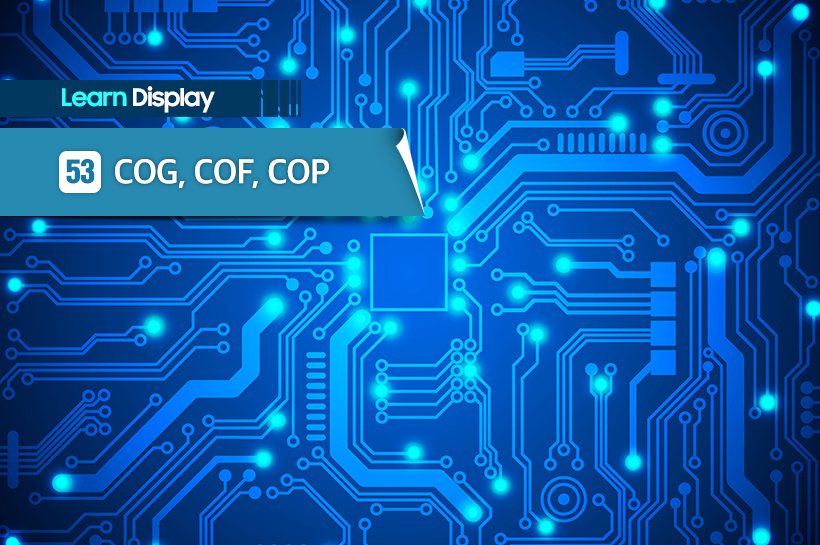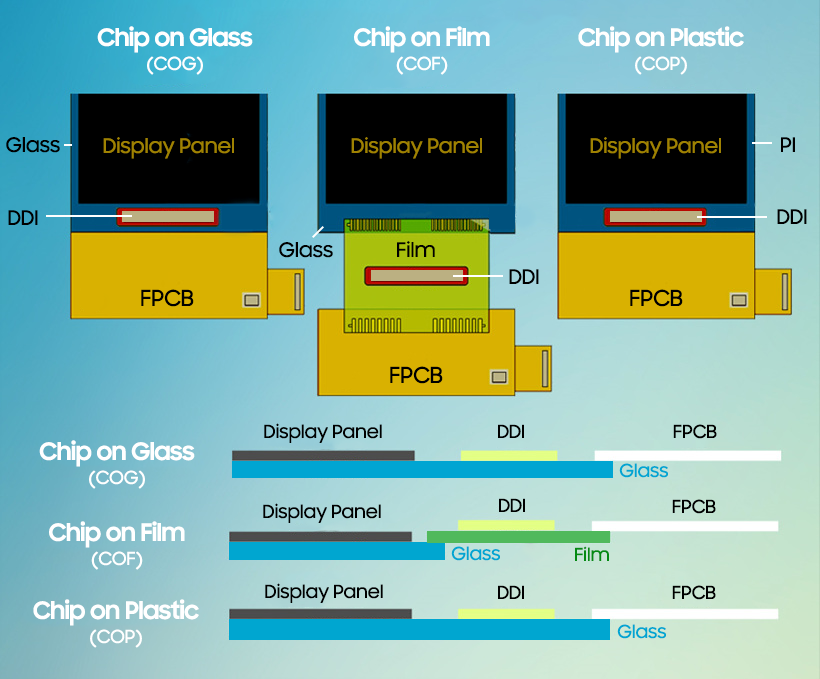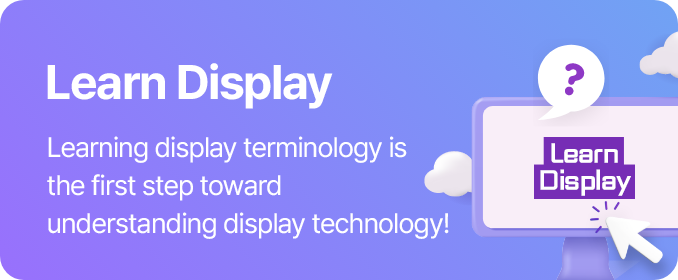
For a display panel to function properly, a small semiconductor chip called a display driver IC (DDI) is needed. The DDI controls the display pixels by transmitting signals to the TFT and serves as the communication channel between the Application Processor (AP) and the display panel in IT devices such as a smartphone.
Chip On Glass (COG), Chip On Film (COF), and Chip On Plastic (COP) are all terms that describe the form or method of connecting a DDI to a display or a printed circuit board. Attaching a driver IC to a substrate for display panels requires different techniques depending on the type of the substrate or the method of attaching the driver IC.

Chip On Glass (COG) is the method of placing the driver IC directly on top of the glass substrate.
Chip On Film (COF) refers to a film with a thin printed circuit equipped with a driver IC, and this film connects the display substrate and the FPCB. As the driver IC is bonded to a thin film, the film can be rolled or folded, which allows a flexible design for the final product that the panel is used for and reduces the thickness or size of the product.
Chip On Film (COF) and Chip On Plastic (COP) methods are mostly used on flexible/foldable screen displays since they both bond DDI on top of flexible films or polyimide substrates. These techniques provide excellent spatial usability for the flexible display products such as reducing the bezel at the top and the bottom.



